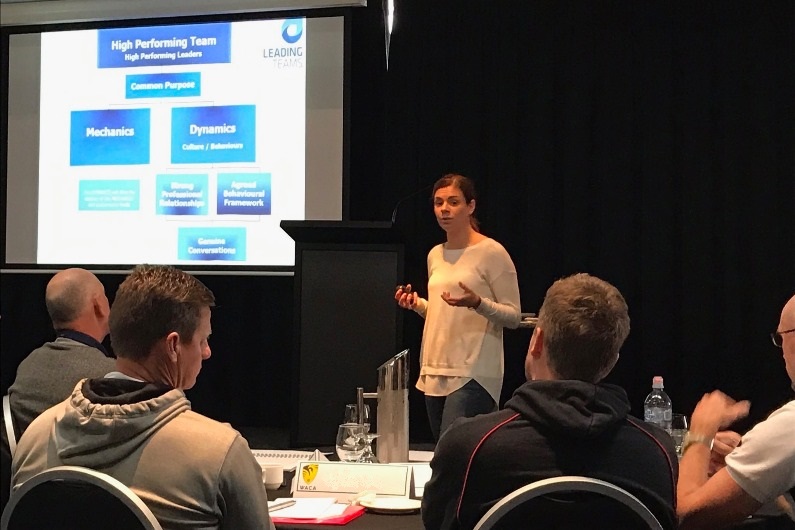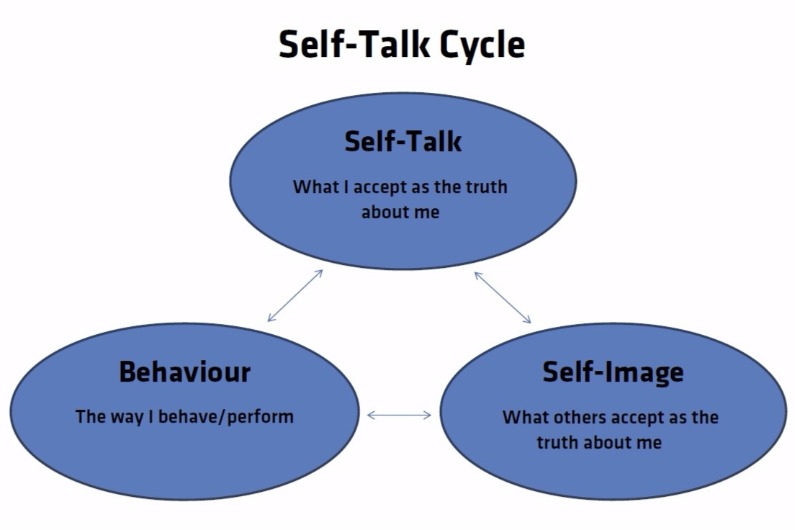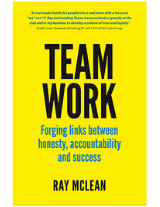“Whether you think you can or think you can’t. You’re right.”
What Henry Ford was referring to when he said this was the concept of self-talk, also known as inner speech, verbal thinking, internal dialogue, inner voicing – essentially the ‘person’ that lives in your head. Self-talk has been studied scientifically for almost as long as experimental psychology has been in existence, with researchers in the 1880s taking an interest in understanding the nature and function of inner speech and the things people say to themselves.
The self-talk cycle is one of the key models we use at Leading Teams. Self-talk is widely used in sport psychology because of its effects in enhancing athletic performance; it has been found to be the differentiator between very good and great athletic performance. It has also been used by clinical and counselling psychologists as well as in the education field. Self-talk is an extremely useful tool for leadership and for life and that is why we always introduce the concept to our clients.
How is self-talk relevant to leadership?
A research paper from 2013 looked at self-talk in leadership – both constructive and dysfunctional.
“Constructive self-talk is characterised by accurate self-analysis, well-grounded beliefs, and an encouraging orientation….constructive self-talk is thought to be thoughtful, substantive, motivational, insightful and self-reflective.
Dysfunctional self-talk is said to be a tendency to focus on the negative aspects of challenging situations. “This type of thinking does not embrace change or challenge; instead it shies away from it and focuses on the situation’s obstacles.”
The paper studied the relationship between self-talk and effective leadership, with evidence to suggest that if a leader uses constructive self-talk they can regulate their own emotions, and view situations from others’ perspectives, which can help in taking a birds-eye view when making business decisions and problem-solving.
Constructive self-talk reduces leaders’ stress at work, and is associated with an increased ability to lead others. It allows leaders to construct and manage a positive work environment and lead their followers more effectively.
Dysfunctional self-talk was linked to a decrease in leader creativity. Seeing obstacles as problems, rather than opportunities, decreases a person’s willingness to persist which is often necessary for developing and implementing creative ideas.
It was found that highly successful senior leaders did not often display dysfunctional self-talk.
When repeated over individuals and occasions, self-talk can produce important practical benefits in terms of leaders’ well-being and effectiveness, which in turn can positively influence their followers.
The Leading Teams self-talk cycle
We each choose our own inner dialogue. By becoming aware of our self-talk, we can change this verbal thinking. What we believe the truth about ourselves to be impacts on two things: how we behave and what others see (self-image).
The arrows go both directions but the cycle always starts with self-talk. As someone behaves in a certain way, they continue to believe it to be the truth about themselves.
A key element of self-image is getting feedback from others to understand what they believe to be the truth about you. However, trust is integral in receiving feedback. If you do not trust the person delivering the feedback, chances are you will not take it on board.
Some people need evidence or proof of their ability before they will believe they can do something. They tend to focus on behavior and what other people think (self-image) rather than focusing on their self-talk.
Changing your self-talk
Every decision we make involves self-talk whether we know it or not.
Removing language such as “I always” or “I never” and changing it to “I can” and “I will” is beneficial to productive self-talk.
Laird Hamilton, the American surfer, said it best when he said, “Make sure your worst enemy doesn’t live between your own two ears.”
The self-talk cycle is just one of the models Leading Teams uses to help clients better understand how to be a leader. To find out how we could help your team, get in touch today.





